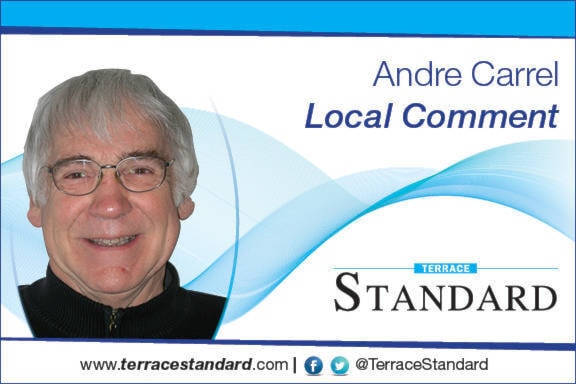Municipal public works is a luckless service, rarely the subject of ribbon cutting ceremonies. It is taken for granted on humdrum days and cursed when the unexpected happens. What frustrates public works are not unexpected events, it is that extreme events should be expected. The problem is political. Far too many municipal councils fail to recognize public works and town planning as Siamese twins. Some councils don’t even recognize the two as members of the same family.
Town planning is about the future, about progress, and about solutions to problems. Its ethos is positivity. Public works’ ethos is shaped by the reality of town planning’s solutions. The consequence for municipal public works is the curse of incrementalism.
An example of what incrementalism means in our community is the proposed sidewalk on Lanfear Hill. Nobody disputes that the existing infrastructure is inadequate and unsafe for pedestrians and cyclists. The solution being considered is a sidewalk separated from, and located above the street. This is an attractive solution to a vexing long-term problem. Financing this project is the immediate hurdle to be overcome. If financing can be arranged, the project will likely be incorporated in the city’s financial plan. A safe Lanfear sidewalk would be greatly appreciated by pedestrians and cyclists as much as by motorists: it offers a politically rewarding ribbon-cutting opportunity.
What about winter maintenance for this new sidewalk? A grader could not be used on a Lanfear sidewalk as the project is currently envisaged. Council would give this sidewalk a high priority for snow removal and sanding. How could public works respond? It could submit a budget request to increase the sidewalk snow clearing machine inventory by fifty percent; in other words, to purchase a third unit (as in the third garbage truck example). It could recommend that some sidewalk snow removal be contracted to the private sector. This would not be a cheap solution. A contract could not provide a guaranteed amount for work, but it would have to require that equipment and manpower be available on short notice. Such conditions are invariably reflected in a contract’s costs. Another option – the most likely one in the short term – is to add the new Lanfear sidewalk to the list of priorities of sidewalks to be cleared, which in turn would delay the clearing of other sidewalks. A fixed response capacity confronted by ever growing service expectations – incrementalism – contributes to stress in the workplace.
This is the state of affairs which fuels every municipal council’s pursuit of industrial development. Low density residential assessments do not generate sufficient tax revenues to pay for the services communities require, desire, and expect from their local government.
One remedy to the problem of insufficient tax revenues is to aim for greater infrastructure efficiency by reducing the per capita units of infrastructure in new residential developments. To achieve this, a council needs to shift its town planning focus toward infill and higher residential densities. It would help a policy decision of the kind if the public works department were mandated to produce a long-term infrastructure servicing and maintenance impact analysis at the earliest stage of any new residential development proposal. Such analysis should be a decisive factor in the planning and approval process for all developments.
In the meantime, generously assisted by a neighbour who owns a snow blower, I’ll keep shovelling the grader’s windrows.
